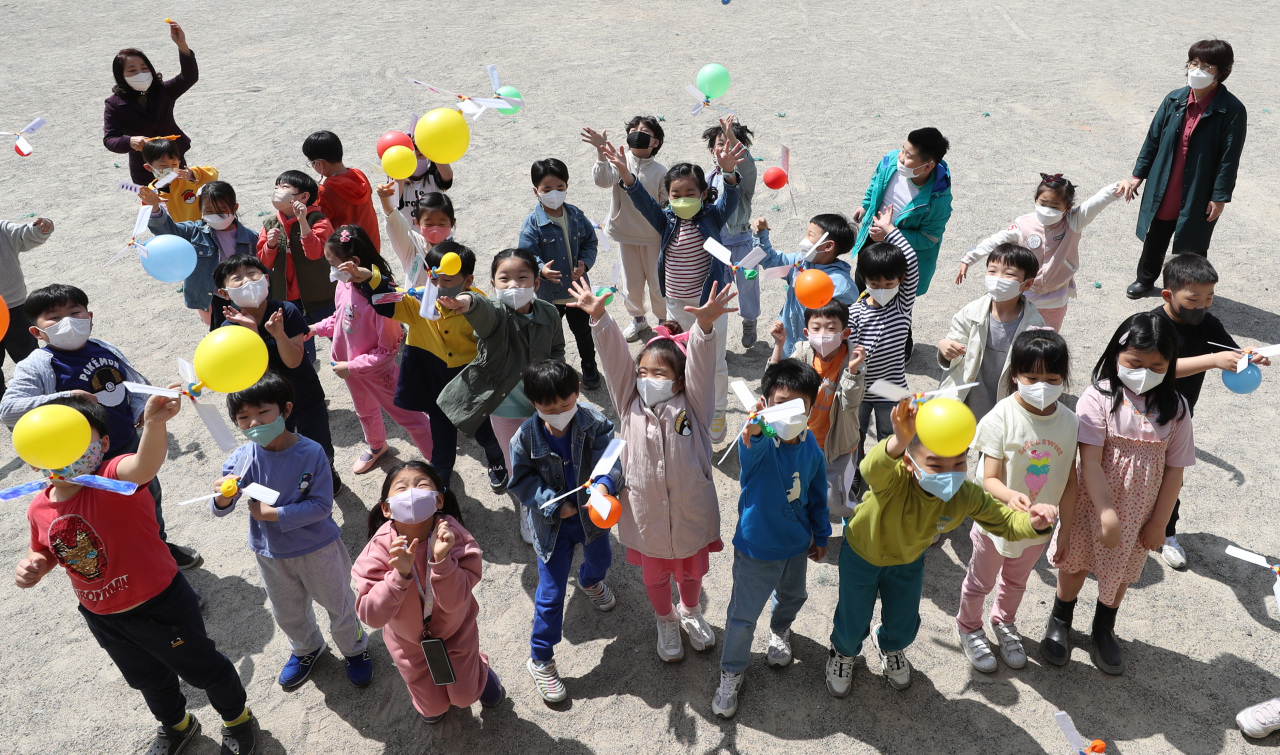 |
Students throw helicopter balloons in air at a science event held Wednesday at an elementary school in Suwon, Gyeonggi Province. (Joint Press Corps) |
Plans to bring pre-pandemic normalcy to schools across the country in May are being met with both excitement and worry.
On Wednesday, the Ministry of Education announced the “back to normal” guidelines that will see schools in Korea resume normal operations beginning May 1.
Under the new guidelines, kindergartens, elementary, middle and high schools will reintroduce both academic and extracurricular activities, halting online classes, dropping self-testing routines and arranging group events. Only the mask mandate will be maintained for now.
After two years of pandemic-related interruptions, students are excited to return to their daily lives.
“I haven’t had the chance to really get to know my classmates. It would be nice to have the chance to take part in school experiences, like sports and field trips,” said Choi Seong-ho, a middle schooler based in northern Seoul.
Parents are also excited for schools to return to normalcy.
“My son has been missing out on school life for two years. I wish things could work out to help students to experience what they should at their ages,” a mother of a high school student said.
“But I am also worried about COVID-19. The number of daily confirmed patients is still high,” she said.
Another parent, with two children, said he is worried about schools prematurely lifting social distancing measures.
“As a parent, of course, I am glad I won’t have to worry about the inconstancy in childcare,” an office worker in his 30s surnamed Yang said. “But I am worried about other children coming to classes even though they are confirmed with COVID-19.”
He said although Korea has lifted social distancing measures in almost all sectors, different rules should be applied for schools as the vaccination rate of children is lower than that of adults.
As of Thursday, 72.9 percent of children aged between 13 and 15 have received two shots of a COVID-19 vaccine.
“Most parents would not want to send their children to schools when they are sick. But there are also those who do not have a choice,” he added.
Teachers’ unions are also voicing their concerns on the new guidelines, criticizing the Education Ministry’s lack of specific guidelines.
“The new guidelines still put the burden of infectious disease prevention and control onto teachers,” the Korea Federation of Teachers’ Association said Wednesday in an official statement.
“There are concerns against the ministry allowing schools to plan field trips and excursions through gaining consent from students and parents without offering specific countermeasures related to infectious disease control,” it read.
Another union of school workers also criticized the new protocols.
“It is still difficult to secure substitute teachers to fill in for those who have contracted COVID-19. Students are still finding it difficult to adapt to school life,” the Korean Teachers and Education Workers Union announced, stressing the need for extra hands on the ground.
By Im Eun-byel (
silverstar@heraldcorp.com)








